ZHEJIANG BLISSAM CHEMICAL CO., LTD. is a leading manufacturer of silicone-based fluids and additives for various industries. Our state-of-the-art production facility is equipped with the latest technology, allowing us to produce a wide range of silicone fluids with different viscosities and properties. Our team of experts is dedicated to continually improving our formulations to meet the ever-changing needs of our customers.
We offer a comprehensive range of silicone fluids that are used in a variety of applications across industries such as automotive, pharmaceutical, personal care, and textiles. Our silicone fluids are known for their superior performance and stability, making them a preferred choice among our customers.
Our product line includes dimethyl silicone fluids, phenyl silicone fluids, silicone emulsions, and silicone grease. We also provide customized solutions to meet specific application requirements. Our silicone fluids have excellent thermal stability, low surface tension, and high dielectric strength, making them suitable for use in extreme conditions.
In addition to silicone fluids, we also offer silicone-based additives such as surfactants, defoamers, and release agents. These additives enhance the performance of our silicone fluids and provide additional benefits to our customers' products.
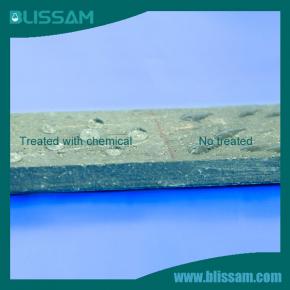
Silicone Fluids are versatile and highly functional products that have taken the market by storm. These silicone-based compounds offer superior resilience, excellent lubrication, and an impressive temperature range, making them suitable for a wide range of applications. Whether used in industrial settings, personal care products, or as a sealant, Silicone Fluids offer exceptional performance and durability. With their unique properties, they offer unmatched protection against moisture, heat, and chemical corrosion. These premium products provide a high-quality solution for all your fluid needs. Choose Silicone Fluids for reliable and long-lasting performance in any environment.
Introducing our range of Silicone Fluids - the revolutionary solution for all your lubrication needs. Made with advanced silicone technology, our Silicone Fluids provide unmatched performance and durability for a wide range of applications. From industrial machinery to automotive, our products offer superior lubrication, reducing friction, and extending the lifespan of your equipment. With a wide temperature range and exceptional resistance to heat, moisture, and chemical exposure, our Silicone Fluids are the perfect choice for demanding environments. Trust in our Silicone Fluids to keep your operations running smoothly and efficiently.
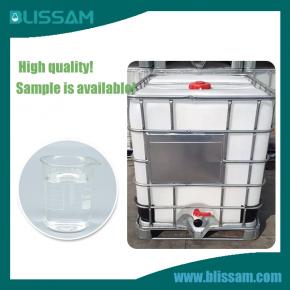
Silicone fluids, also known as silicone oils, are a type of synthetic polymer fluid that is commonly used in various industries due to its unique properties. These fluids are composed mainly of silicon atoms and oxygen atoms, giving them a characteristic flexibility and heat resistance. They are available in a wide range of viscosities, making them suitable for a variety of applications including lubrication, release agents, and coatings. With their low surface tension and non-toxic nature, silicone fluids are also commonly used in the cosmetic and personal care industry. In addition, they are highly stable and have excellent electrical insulation properties, making them suitable for use in electronic devices. Overall, silicone fluids offer a versatile and efficient solution for many different industries and applications.
1.What are the chemical reactions and processes involved in the production of silicone fluids?
2.How do silicone fluids fulfill the requirements of different regulatory bodies around the world?
3.Can silicone fluids be used as an alternative to traditional solvents in cleaning products?
4.What are the potential risks and environmental impact of accidental spills or leaks of silicone fluids?
5.What are the advantages and disadvantages of using silicone fluids in electrical insulation?
6.How does the addition of silicone fluids enhance the performance of cosmetics and skincare products?
7.How are silicone fluids used in the production of medical devices and implants?
8.What are the considerations and limitations when using silicone fluids as mold release agents?
9.What is the role of silicone fluids in the production of adhesives and sealants?
1.What are the chemical reactions and processes involved in the production of silicone fluids?
The production of silicone fluids involves several chemical reactions and processes, including: 1. Hydrolysis: The first step in the production of silicone fluids is the hydrolysis of silicon metal or silicon tetrachloride (SiCl4) in the presence of water. This reaction produces silanol (Si-OH) groups, which are the building blocks of silicone fluids. 2. Polymerization: The silanol groups produced in the hydrolysis step then undergo a condensation reaction, where they combine to form longer chains of siloxane (Si-O-Si) units. This process is known as polymerization and is typically catalyzed by acids or bases. 3. Distillation: The resulting polymer is then distilled to remove any impurities and to control the molecular weight of the silicone fluid. This step is crucial in determining the physical properties of the final product. 4. Functionalization: To modify the properties of the silicone fluid, functional groups such as methyl, phenyl, or vinyl can be added to the siloxane backbone through a variety of chemical reactions. This process is known as functionalization and allows for the customization of silicone fluids for specific applications. 5. Emulsification: In some cases, silicone fluids are emulsified with water to form stable oil-in-water emulsions. This process involves the addition of surfactants and emulsifiers to the silicone fluid, which helps to disperse the oil droplets in water. 6. Cross-linking: Cross-linking is a process where the siloxane chains are linked together to form a three-dimensional network. This can be achieved through the addition of cross-linking agents or by exposing the silicone fluid to high temperatures or radiation. Cross-linking can improve the physical properties of silicone fluids, making them more resistant to heat, chemicals, and mechanical stress. 7. End-capping: End-capping is a process where the silanol groups at the ends of the siloxane chains are reacted with functional groups to prevent further polymerization. This helps to control the molecular weight and viscosity of the silicone fluid. 8. Purification: The final step in the production of silicone fluids is purification, where the product is filtered and treated to remove any remaining impurities. This ensures that the silicone fluid meets the required purity standards for its intended use. Overall, the production of silicone fluids involves a series of chemical reactions and processes that can be tailored to produce a wide range of products with different properties
2.How do silicone fluids fulfill the requirements of different regulatory bodies around the world?
Silicone fluids are versatile and widely used in various industries due to their unique properties and ability to fulfill the requirements of different regulatory bodies around the world. Some of the ways in which silicone fluids fulfill these requirements are: 1. Non-toxic and biocompatible: Silicone fluids are non-toxic and biocompatible, making them suitable for use in medical and pharmaceutical applications. They are approved by regulatory bodies such as the US Food and Drug Administration (FDA) and the European Medicines Agency (EMA) for use in medical devices and pharmaceutical formulations. 2. Chemical inertness: Silicone fluids are chemically inert, meaning they do not react with other substances. This makes them safe for use in food contact materials and packaging, as they do not leach harmful chemicals into food products. They are approved by regulatory bodies such as the FDA and the European Food Safety Authority (EFSA) for use in food contact applications. 3. Thermal stability: Silicone fluids have a high thermal stability, meaning they can withstand extreme temperatures without degrading or releasing harmful substances. This makes them suitable for use in high-temperature applications, such as automotive and aerospace industries. They are approved by regulatory bodies such as the National Highway Traffic Safety Administration (NHTSA) and the Federal Aviation Administration (FAA) for use in these industries. 4. Environmental safety: Silicone fluids are considered environmentally safe as they do not contribute to ozone depletion or global warming. They are also biodegradable, meaning they break down into harmless substances in the environment. This makes them compliant with regulations set by bodies such as the Environmental Protection Agency (EPA) and the European Chemicals Agency (ECHA). 5. Electrical insulation: Silicone fluids have excellent electrical insulation properties, making them suitable for use in electrical and electronic applications. They are approved by regulatory bodies such as the Underwriters Laboratories (UL) and the International Electrotechnical Commission (IEC) for use in these applications. 6. Chemical stability: Silicone fluids are highly stable and do not break down or react with other substances, making them suitable for use in industrial applications such as lubricants and coatings. They are approved by regulatory bodies such as the Occupational Safety and Health Administration (OSHA) and the European Chemicals Agency (ECHA) for use in these applications. In summary, silicone fluids fulfill the requirements of different regulatory bodies around the world due to their non-toxic, biocompatible, chemically inert, thermally stable, environmentally safe, electric

3.Can silicone fluids be used as an alternative to traditional solvents in cleaning products?
Yes, silicone fluids can be used as an alternative to traditional solvents in cleaning products. Silicone fluids have low surface tension and high spreading ability, making them effective at removing dirt and grime from surfaces. They are also non-toxic and non-flammable, making them a safer option compared to traditional solvents. Additionally, silicone fluids have a high flash point, meaning they do not evaporate quickly and can be reused multiple times, making them more cost-effective. However, it is important to note that silicone fluids may not be suitable for all types of cleaning tasks and may not be as effective on certain types of dirt or stains. It is always best to test a small area before using silicone fluids as an alternative to traditional solvents in cleaning products.
4.What are the potential risks and environmental impact of accidental spills or leaks of silicone fluids?
1. Contamination of Water Sources: Silicone fluids are insoluble in water and can form a thin layer on the surface of water bodies, preventing oxygen exchange and affecting aquatic life. In case of a spill or leak, the fluid can contaminate nearby water sources, leading to the death of aquatic organisms and disrupting the ecosystem. 2. Soil Contamination: Silicone fluids can also contaminate soil, making it unsuitable for plant growth. This can have a significant impact on agriculture and can also affect the health of animals that feed on contaminated plants. 3. Harmful to Wildlife: If silicone fluids are ingested by animals, it can cause harm to their digestive system and lead to health issues. In addition, the fluid can also coat the feathers or fur of animals, making it difficult for them to regulate their body temperature and leading to hypothermia. 4. Air Pollution: In case of a large spill or leak, silicone fluids can evaporate and form a mist in the air. This can lead to air pollution and affect the respiratory health of humans and animals. 5. Fire Hazard: Some silicone fluids are flammable and can pose a fire hazard if they come in contact with a heat source or an open flame. This can lead to explosions and cause significant damage to the environment and nearby structures. 6. Long-term Environmental Impact: Silicone fluids are not biodegradable and can persist in the environment for a long time. This can have a long-term impact on the ecosystem and can also affect human health if the contaminated environment is used for recreational or agricultural purposes. 7. Damage to Infrastructure: If a spill or leak occurs near infrastructure such as roads, buildings, or pipelines, the silicone fluid can seep into cracks and cause damage. This can lead to costly repairs and disruptions in services. 8. Health Risks for Humans: Exposure to silicone fluids can cause skin and eye irritation, respiratory problems, and allergic reactions in humans. In case of a large spill or leak, nearby communities may be at risk of these health issues. 9. Impact on Marine Life: Silicone fluids can also have a detrimental impact on marine life. In addition to contaminating water sources, the fluid can also coat the gills of fish, making it difficult for them to breathe and leading to death. 10. Cost of Cleanup and Remediation: In the event of a spill or leak, the cleanup and remediation process can be costly and time-consuming. This can also have a significant economic impact
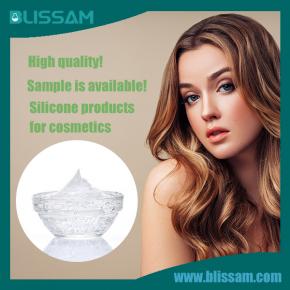
5.What are the advantages and disadvantages of using silicone fluids in electrical insulation?
Advantages: 1. High dielectric strength: Silicone fluids have a high dielectric strength, making them an effective insulator for electrical equipment. 2. Wide temperature range: Silicone fluids can withstand a wide range of temperatures, from -50°C to 200°C, making them suitable for use in both high and low-temperature applications. 3. Chemical resistance: Silicone fluids are resistant to many chemicals, including acids, bases, and solvents, making them suitable for use in harsh environments. 4. Low flammability: Silicone fluids have a low flammability, making them safer to use in electrical equipment. 5. Good thermal stability: Silicone fluids have good thermal stability, meaning they can withstand high temperatures without breaking down or losing their insulating properties. 6. Low viscosity: Silicone fluids have a low viscosity, making them easy to apply and allowing them to penetrate small gaps and crevices in electrical equipment. Disadvantages: 1. High cost: Silicone fluids can be more expensive than other types of insulating fluids, making them less cost-effective for some applications. 2. Low flash point: While silicone fluids have a low flammability, they also have a low flash point, meaning they can ignite at relatively low temperatures. 3. Poor compatibility with some materials: Silicone fluids may not be compatible with certain materials, such as some types of rubber, which can cause swelling or degradation. 4. Limited shelf life: Silicone fluids have a limited shelf life and can degrade over time, especially when exposed to high temperatures. 5. Difficult to remove: Silicone fluids can be difficult to remove from electrical equipment once they have been applied, which can make maintenance and repairs more challenging. 6. Environmental concerns: Some silicone fluids may contain harmful chemicals that can be harmful to the environment if not disposed of properly.
6.How does the addition of silicone fluids enhance the performance of cosmetics and skincare products?
1. Improved Texture and Spreadability: Silicone fluids have a smooth and silky texture that helps to improve the overall feel of the product. They also have a low surface tension, which allows them to spread easily and evenly on the skin, making the application of cosmetics and skincare products smoother and more comfortable. 2. Enhanced Moisturization: Silicone fluids have a high water-binding capacity, which helps to lock in moisture and keep the skin hydrated. This makes them an excellent ingredient for moisturizers, serums, and other skincare products, as they can provide long-lasting hydration without feeling heavy or greasy on the skin. 3. Increased Longevity: Silicone fluids are resistant to water and sweat, making them ideal for use in long-wearing cosmetics such as foundations, primers, and eyeliners. They help to create a barrier on the skin that prevents the product from smudging or fading, ensuring that the makeup stays in place for longer. 4. Smoothing and Blurring Effect: Silicone fluids have a unique ability to fill in fine lines and wrinkles, creating a smooth and even surface on the skin. This helps to give the appearance of a flawless complexion and can also help to minimize the appearance of pores. 5. Protection from Environmental Factors: Silicone fluids form a protective barrier on the skin that helps to shield it from environmental stressors such as pollution and UV rays. This can help to prevent premature aging and damage to the skin, making it a valuable ingredient in anti-aging skincare products. 6. Non-Comedogenic: Silicone fluids are non-comedogenic, meaning they do not clog pores or cause acne breakouts. This makes them suitable for use in a wide range of skincare and cosmetic products, even for those with sensitive or acne-prone skin. 7. Improved Stability: Silicone fluids are stable ingredients that can help to extend the shelf life of cosmetics and skincare products. They are resistant to oxidation and microbial growth, which can help to maintain the efficacy and quality of the product over time. Overall, the addition of silicone fluids in cosmetics and skincare products can provide a range of benefits, including improved texture, hydration, longevity, and protection, making them a valuable ingredient in the formulation of these products.
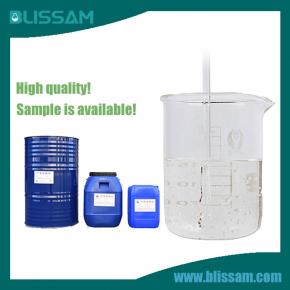
7.How are silicone fluids used in the production of medical devices and implants?
Silicone fluids, also known as silicone oils, are used in the production of medical devices and implants for their unique properties and benefits. These fluids are made up of long chains of alternating silicon and oxygen atoms, giving them a high degree of flexibility and stability. Here are some ways in which silicone fluids are used in the production of medical devices and implants: 1. Lubrication: Silicone fluids are commonly used as lubricants in the production of medical devices and implants. They have a low surface tension and high viscosity, making them ideal for reducing friction and providing smooth movement in devices such as catheters, syringes, and surgical instruments. 2. Coatings: Silicone fluids are also used as coatings on medical devices and implants to improve their biocompatibility and reduce the risk of infection. These coatings can also provide a smooth and non-stick surface, making it easier for the device to be inserted or removed from the body. 3. Mold release agents: In the manufacturing process of medical devices and implants, silicone fluids are used as mold release agents. They prevent the device from sticking to the mold during the production process, ensuring a smooth and accurate final product. 4. Sealants: Silicone fluids are used as sealants in the production of medical devices and implants. They have excellent adhesion properties and can create a strong and durable seal, making them suitable for use in devices such as pacemakers and artificial joints. 5. Implant lubricants: In the production of implants, silicone fluids are used as lubricants to facilitate the insertion and placement of the implant in the body. They can also help reduce friction and discomfort for the patient during the healing process. 6. Drug delivery systems: Silicone fluids are used in the production of drug delivery systems, such as transdermal patches and implantable drug reservoirs. They can act as carriers for drugs, providing a controlled and sustained release of medication over time. Overall, silicone fluids play a crucial role in the production of medical devices and implants, providing lubrication, biocompatibility, and other essential properties that are necessary for safe and effective use in the human body.
8.What are the considerations and limitations when using silicone fluids as mold release agents?
1. Compatibility with the mold material: Silicone fluids may not be compatible with all types of mold materials. It is important to check the compatibility of the fluid with the mold material before using it as a release agent. 2. Effect on surface finish: Silicone fluids can leave a thin film on the surface of the mold, which may affect the surface finish of the molded part. This can be a concern for applications where a smooth and glossy surface is required. 3. Potential for buildup: Over time, repeated use of silicone fluids as a release agent can lead to a buildup of the fluid on the mold surface. This can affect the release properties and may require frequent cleaning of the mold. 4. Temperature limitations: Silicone fluids have a limited temperature range in which they can effectively function as a release agent. High temperatures can cause the fluid to break down and lose its effectiveness. 5. Health and safety considerations: Some silicone fluids may contain harmful chemicals that can be hazardous to health. It is important to follow proper safety precautions when handling and using these fluids. 6. Cost: Silicone fluids can be more expensive compared to other types of mold release agents. This can be a limiting factor for some applications, especially for high volume production. 7. Environmental impact: Silicone fluids are not biodegradable and can have a negative impact on the environment if not disposed of properly. It is important to follow proper disposal guidelines to minimize the environmental impact. 8. Effect on bonding and painting: Silicone fluids can leave a residue on the molded part, which can affect the bonding and painting of the part. This can be a concern for applications where the molded part needs to be bonded or painted. 9. Application method: The effectiveness of silicone fluids as a release agent can vary depending on the application method. It is important to follow the recommended application method for best results. 10. Shelf life: Silicone fluids have a limited shelf life and can degrade over time, especially if exposed to high temperatures or sunlight. It is important to check the expiration date and storage conditions before using the fluid as a release agent.
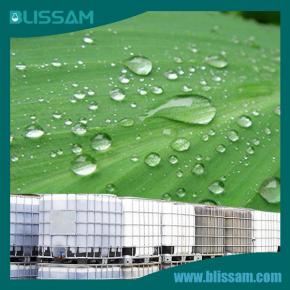
9.What is the role of silicone fluids in the production of adhesives and sealants?
Silicone fluids, also known as silicone oils, play a crucial role in the production of adhesives and sealants. They are used as additives to modify the properties of the final product, such as viscosity, adhesion, and flexibility. Some of the specific roles of silicone fluids in the production of adhesives and sealants include: 1. Lubrication: Silicone fluids act as lubricants in the production process, making it easier to mix and process the ingredients. They also reduce friction and prevent the adhesives and sealants from sticking to the production equipment. 2. Viscosity control: Silicone fluids are available in a wide range of viscosities, from low to high. This allows manufacturers to adjust the viscosity of their adhesives and sealants to meet specific application requirements. 3. Enhancing adhesion: Silicone fluids can improve the adhesion of adhesives and sealants to various substrates, including metals, plastics, and glass. They also help to reduce the surface tension of the adhesive, allowing it to spread evenly and form a strong bond. 4. Flexibility and durability: Silicone fluids can improve the flexibility and durability of adhesives and sealants, making them more resistant to temperature changes, weathering, and chemical exposure. 5. Water resistance: Silicone fluids are hydrophobic, meaning they repel water. This property makes them ideal for use in adhesives and sealants that need to withstand exposure to moisture or water. 6. Thermal stability: Silicone fluids have a high thermal stability, meaning they can withstand high temperatures without breaking down. This makes them suitable for use in adhesives and sealants that will be exposed to heat or used in high-temperature applications. 7. UV resistance: Some silicone fluids have UV-resistant properties, making them suitable for use in adhesives and sealants that will be exposed to sunlight or other sources of UV radiation. Overall, silicone fluids play a critical role in improving the performance and properties of adhesives and sealants, making them more versatile and suitable for a wide range of applications.
Contact:
Phone: +86-15957191858
E-mail: info@blissam.com
Whatsapp:+8615957191858
Add: A647, No. 9, Xiyuan Road, Xihu District, Hangzhou, Zhejiang, China
We chat
